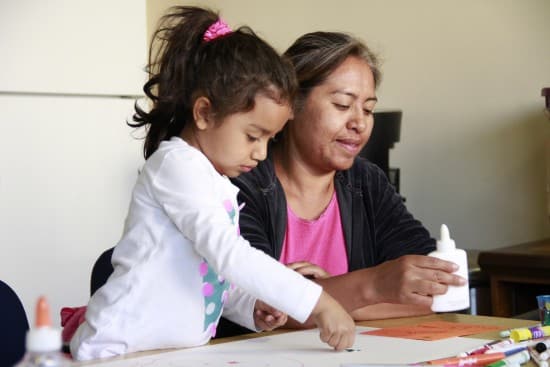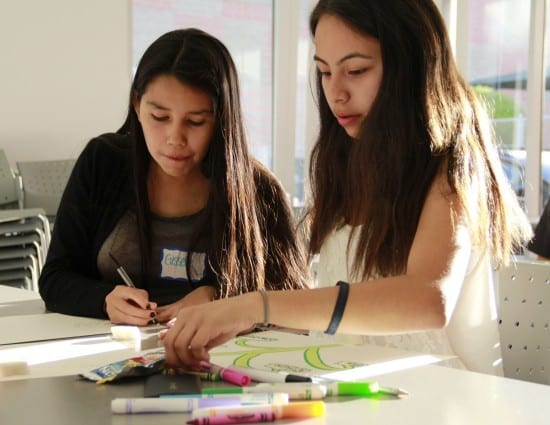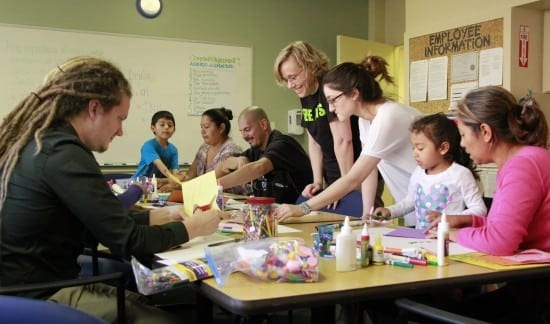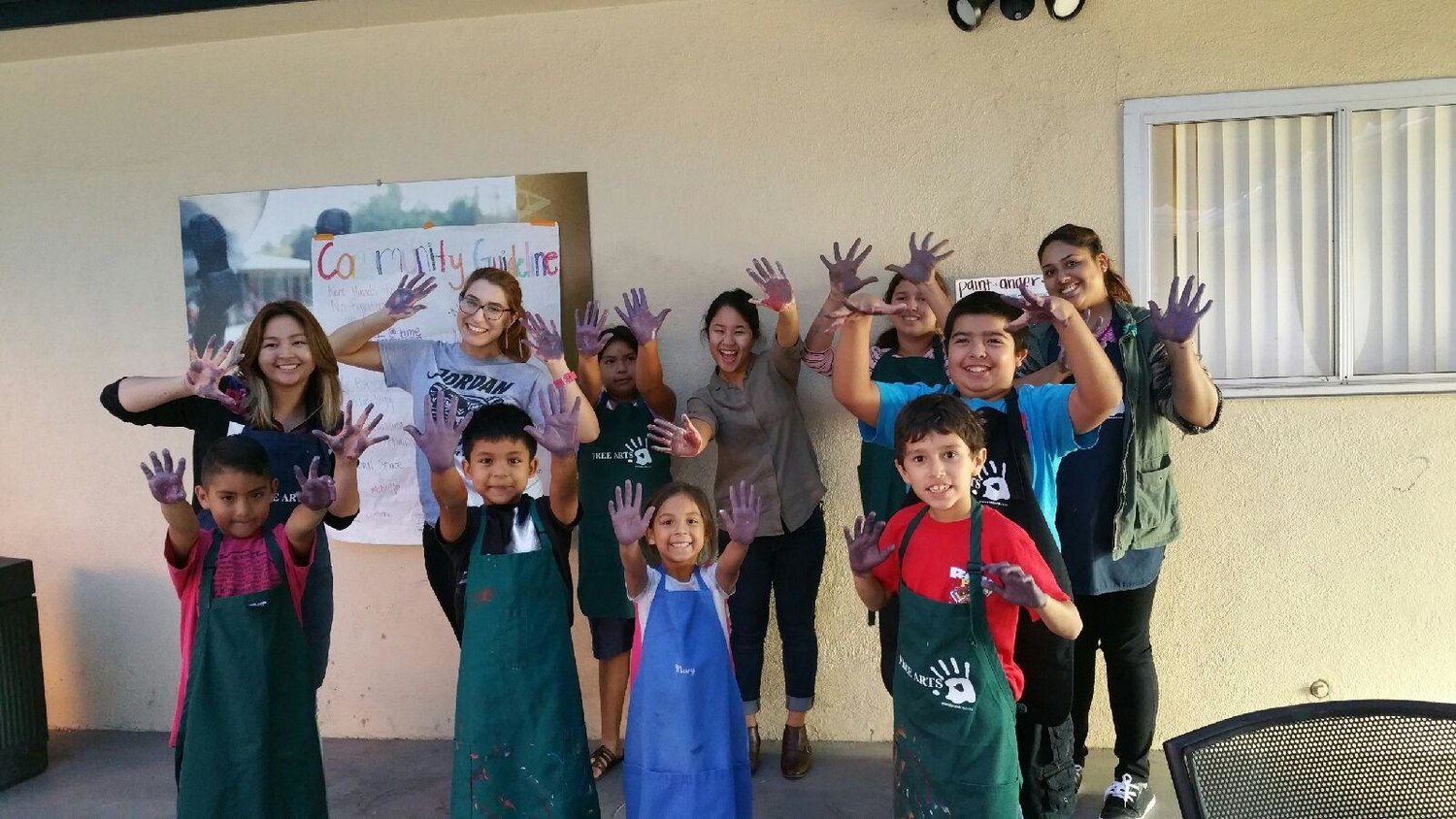
Free Arts for Children’s Court: Helping Kids in Difficult Straits
Free Arts is the newest organization to receive a small grant from Kars4Kids. This organization was founded in 1977 in Malibu, California by two women who understood the therapeutic potential of the arts. Carolyn Sargent had turned to art to recover from the pain and loneliness of hearing loss and Elda Unger was an artist who dreamed of becoming an art therapist. The two women thought they could bring art to children in foster care: children who had suffered poverty, abuse, neglect, and homelessness. Free Arts was such a success that eventually, branches of the organization were founded in Arizona, the Northwest, New York, and in Minnesota.
Free Arts runs four main programs. The first is Free Arts for Children’s Court, which offers therapeutic drawing for children who are waiting for dependency hearings and other potentially traumatic courtroom experiences. Another program is the Free Arts Mentoring program. The mentoring program is an 8-12 week program in which weekly 90-minute art sessions are taught by adult volunteers who foster warm and consistent adult relationships with the children. There is also Free Arts for Families, which uses art to cement the bond between family members, and Free Art Days, which offer intensive day-long artistic experiences for children age 4-18.
Kars4Kids was pleased to partner with this organization which is doing so much to support children in difficult straits, by way of a small grant. We were particularly interested in Free Arts for Children’s Court, which seems such a novel, yet brilliant idea. Kars4Kids spoke to Karol Hernandez, Free Arts Programs Specialist, to learn more about this work:
Kars4Kids: Free Arts is doing so much to help children who’ve had it hard, but your Free Arts for Children’s Court project is especially intriguing. What kind of cases are handled in Children’s Court? Why do the children need to be there?
Karol Hernandez: Cases here at the Children’s Court involve custody between caregivers, foster care, adoption, sexual abuse, neglect, or an update of how the children are doing. Most children are getting interviewed by their social worker or attorney about their case, which may involve questions about their living status, health, school, etc. Some children may not have cases and are just here to support their siblings or other younger family members. Free Arts staff and volunteers do not ask the children why they are attending Children’s Court in order to respect their confidentiality.

KarsKids: How old are the children you work with at Children’s Court?
Karol Hernandez: The ages of the children we work with varies from ages 1-18. We do ask for supervision of the caregiver for the younger children who are still not capable to use their fine motor skills and need extra assistances.
Kars4Kids: What is the goal of the Free Arts for Children’s Court project?
Karol Hernandez: The goal for the art projects is for volunteers to provide a positive interaction with the children. Also, due to the environment being stressful, volunteers help the children to gain confidence and calmness through the art. Volunteers pick their projects from our curriculum. Our curriculum focuses on themes such as trust, self-expression, creativity, social skills, empowerment, and transition.
Kars4Kids: What type of media and supplies do the volunteers bring with them to court?
Karol Hernandez: For our projects volunteers are provided with art materials like glue, crayons, paint, construction paper, feathers, markers, yarn, stickers, cut outs, colored tape, popsicle sticks, tissue paper, pipe cleaners, design paper for collages, scissors, staplers, hole punchers, paper bags for puppets, and etc. We have a variety of materials that volunteers have options to choose from.
Free Arts Curriculum
Kars4Kids: What sort of activities or themes might a volunteer prepare for a day with the children in Children’s Court?
Karol Hernandez: All volunteers plan their projects for the day from the Free Arts curriculum. Our curriculum is grounded in best practices of youth development, experiential learning, and artistic expression. Our lesson plans are divided into three areas: a beginning, middle, and end. The beginning provides a warm up for the children to get comfortable with the volunteer and may include an ice breaker or simple coloring. The middle is where the young people create the art activity from our curriculum.
When children are not familiar with certain art materials our volunteers take their time on explaining and modeling how the materials can be used. The ending provides time for closure and reflection of the project with the group. We ask questions such as: What did you like about the project? or, Tell me about your project? Throughout the whole session with the children, volunteers are asking clarifying questions to children about their projects and have fun and lively conversations.
Kars4Kids: Do the activities you do with the children have to be on the quiet side? Do you have a designated area where you do this work that avoids creating a disturbance?
Karol Hernandez: The activities are always conducted in the waiting area which is out in the open and just outside of the courtrooms. We do have designated tables for our volunteers and children which are reserved for Free Arts. The general noise level of this area is rather loud already. If you can imagine, around 80-100 people in an area having conversations. Our noise level is usually equivalent to a fun and energetic conversation with a group of children. We do not have to talk very quiet but we are also not doing any activities that involve shouting or yelling.
Kars4Kids: Are the courts in general, kindly disposed to the work you do with the kids? Does having an outlet for creative expression for these children help the courts more smoothly manage their caseloads, perhaps?
Karol Hernandez: The courts are really appreciative of what we do with the children. We have times when lawyers, attorneys, judges, or social workers thank us for working with the children on their art projects. Being on the floors with the children I’ve noticed that social workers and attorneys are able to connect more with the children if they ask them about their art projects. Children also have the chance to share about the projects to the judges once they go in the courtrooms. Our projects have become an open outlet for children to share with our volunteers, their social workers and attorneys, judges, and even their caregivers through communication.
Kars4Kids: How do the volunteers approach the children at court? Is it difficult to gain their confidence? Are they usually shy or closed up? How do the volunteers handle resistance from the children they’ve come to help?
Karol Hernandez: Usually when volunteers walk through the waiting room towards the art area children get excited and are ready to sit at our tables. Volunteers always go around the waiting room and welcome children to the art area. At first during the warm up or coloring children tend to be a bit shy but once the volunteers start interacting with them they feel more comfortable and tend to be more open and talkative. There will be times when children are filled with energy and encourage others to join in the fun. Volunteers do not force children to go do art but do give them the option of going to the art area later when they are ready. Our volunteers are trained to be flexible with the children and the situation they may come upon.
A Very Special Thank You
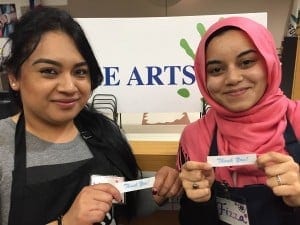 Free Arts for Children’s Court volunteer Fizza related this great motivational story from the floors of Children’s Court: “Yesterday we had a five-year child with most exuberant personality come in to do free arts with us. Throughout her time at the table, she exerted so much positivity, despite the stressful environment around her.
Free Arts for Children’s Court volunteer Fizza related this great motivational story from the floors of Children’s Court: “Yesterday we had a five-year child with most exuberant personality come in to do free arts with us. Throughout her time at the table, she exerted so much positivity, despite the stressful environment around her.
Our project for the day was to have the children create a CD cover for a song that represents their life. After completing her project, she left the table to go show it to her mom. When she returned, she brought back with her small slips of paper that she passed out to each of the volunteers.
These small pieces of paper were a ripped part of a restaurant bill that had the words ‘thank you’ written on them. She had taken them from her mom, who collects them for her work as a waitress. It was such a sweet gesture from someone as young as her.”
Kars4Kids: How do you find your volunteers? Are they beating down the doors to work with you or are you hard-pressed to find decent, willing volunteers? Can you describe what sort of person is likely to end up as a volunteer for this project?
Karol Hernandez: I am sure every agency feels this way, but we have the best volunteers ever! Our volunteers join our team because they are passionate about our mission and the work we do. A large portion of our volunteers come from partnerships we have with local colleges and universities. Through our relationships with their professors, the students are able to do their fieldwork and internship programs with Free Arts.
Most students who become volunteers are pursuing a career involving child development and gain knowledge and experience for their career path. We have many volunteers who continue volunteering even after they have completed the required hours for their degree. Volunteers also connect with us through word of mouth, volunteer match, and outreach events. Our staff and I are also finding ways to recruit volunteers. I am a student at Cal State LA and Vice President of an organization on campus through which I am always recruiting students or members from my school.
Kars4Kids: How many volunteers are currently involved with the Children’s Court project? Do they receive training?
Karol Hernandez: The amount of volunteers we have fluctuates throughout the year. We have the most volunteers during the school semesters and are at our lowest number during the summer and winter breaks. All of our volunteers must go through a training and orientation process. We also have a thorough background check process as well.
Kars4Kids: Are there plans to expand this program?
Karol Hernandez: The courthouse has plans to increase its capacity to service the children and families at the courthouse. It is our desire to be able to meet that growing need. We welcome and encourage individuals, corporations, and organizations to help us continue our mission by volunteering with our agency or supporting through a donation.
Kars4Kids: Are there emotional moments for the volunteers? Do you have a high turnover rate due to burnout? Can you describe a difficult or painful situation encountered by those involved with the Free Arts for Children’s Court project?
Karol Hernandez: In all professions associated with dependency court, burnout and turnover rate are common. We witness and see first-hand many of the heartbreaking and tough stories that are happening everyday in our community. Currently the courthouse is expanding its capacity to meet the needs of the growing number of children who are victims of sex trafficking. We are very mindful and aware of the psychological impact this type of work has on our Free Arts staff and volunteers.
Twice a day we have a team meeting with our volunteers to offer support and build team moral. In these meetings we do an energizer and team-builder exercises together; we allow space for people to share what they are going through; and we offer tips and solutions for our volunteers. Our goal is to know more about the volunteers and for the volunteers to have the chance to get to know other volunteers who they will be working with. Also, we provide our volunteers with useful tools they can use with the children and prepare the volunteers with any situations they might encounter. We also provide handouts with useful tips on how to ask clarifying questions to the children about their projects.
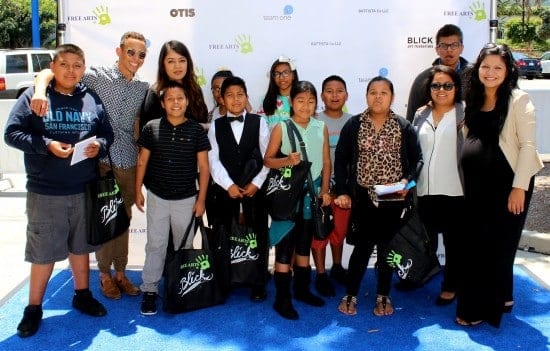
With this type of support and team-building, we are proud to say that we do not have a high burnout or turnover rate. In fact, our team is usually cheering each other on, and enjoy their time volunteering at the courthouse. We also provide out volunteers with extensive training and support in risk management and safety. Our staff continually meets with the courthouse directors and sheriffs with a focus on risk management and safety.
